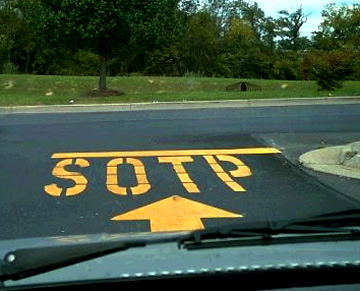 How can you tell that the email you’ve just received was sent not by your bank but by a malicious spammer hoping to steal your account details? The logo looks right. The design appears professional. Even the from address looks like an account at the bank. And yet… there’s something wrong.
How can you tell that the email you’ve just received was sent not by your bank but by a malicious spammer hoping to steal your account details? The logo looks right. The design appears professional. Even the from address looks like an account at the bank. And yet… there’s something wrong.
It’s the spelling. Messages sent by official organizations are word-perfect. They contain no typos, no spelling mistakes and no mangled sentences. When you receive an email from a bank you know you’re dealing with professionals — and not a phishing organization in Siberia pretending to be the “Bonk of Amerika.”
Correct copy creates trust. Bad spelling blasts sales… and sometimes by a huge amount. When Internet entrepreneur Charles Dunscombe removed a spelling error from his site tightsplease.co.uk, he found that revenue per visitor doubled. “If you project this across the whole of internet retail, then millions of pounds worth of business is probably being lost each week due to simple spelling mistakes,” he told BBC news recently.
So what can you do to make sure that the copy you show your leads, both on your landing pages and in your emails, is always correct?
1. Spellcheck Your Newsletters
Running spellcheck is the easiest thing you can do, but it’s not completely reliable. Spellcheck programs will catch simple typos (such as writing “wil” instead of “will”) but they won’t spot the misuse of homonyms or apostrophes. Even the latest version of Word’s spellcheck program gives a pass to the phrase “he stole they’re books.”
Spellcheck should run as you’re working to catch typing errors, and you should run it again when you’ve finished, paying special attention to names and other unrecognized words. But the spellcheck should only be the first filter.
2. Leave It, Then Print It
Once you’ve written your copy, leave it to one side for a while. You want to give yourself time to forget the sentences you’ve just written, so that you read what’s on the page, not recall what you intended to put on the page. The longer you can leave it, the better. If you plan to send a newsletter before the end of the workday, then write first thing in the morning and send it in the evening.
And print it out before you read it through. That might damage your plan for a paperless office but seeing the words in a different format can make them unfamiliar enough for you to give them some special attention.
3. Pass It On
The third filter is a colleague. Before you hit the Publish button or send out the email, give your copy to someone else to read through. Ideally, that person will be a good speller themselves, have an eye for detail, and the patience and time to read carefully. An assistant can do it; proofreading can become a part of their job. One of the advantages of outsourcing your copywriting is that you know it will be read by at least two people — and usually more — before the audience sees it.
Of course, it’s not always possible to apply all of these filters to every piece of copy. Deadlines can land suddenly. Colleagues don’t always have time to check what you’ve written. But the more of them you can pass your copy through, the fewer mistakes you’ll publish — and more trust you’ll enjoy.